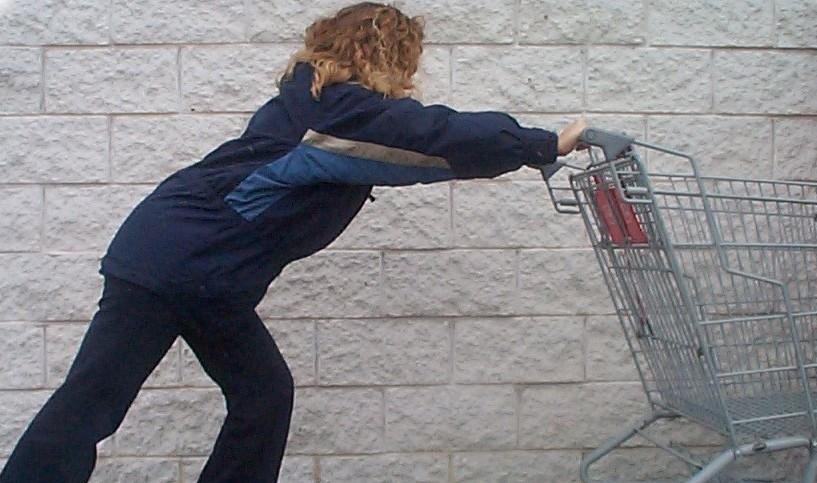Another “ergo” article on shopping? Yes, but this time, I’m thinking about efficiencies and safety while manoeuvring the cart between the store and my car. Recall the last time you tried to navigate a loaded grocery cart from the checkout, through a crowd of adults and children, and then out into a parking lot through vehicular traffic. Were you frustrated by that experience? You’re not alone.
One of the tools that ergonomists use is called “link analysis”. This method can be used at an individual workstation, where we are trying to optimise reach and save time by making the flow efficient, logical, and intuitive. We can also use link analysis for a larger area with multiple workers, customers, vehicular traffic, etc.
Work flow is an efficiency consideration – if a layout is inefficient, time will be wasted and money, ultimately, will be lost. Work layout and flow also have musculoskeletal considerations. More reaching and twisting means a higher likelihood of injuries.
At the local warehouse where I shop, I don’t think I’m the only shopper to be frustrated by the bottleneck at the “receipt check”, and I’m sure I’m not the only one to have had a close encounter with a car as I dodged my cart across the crosswalk.
To use link analysis to evaluate work flow we:
- Prepare a scale layout of the work area
- Use different colours to mark the work flow of the parameters of interest. At an individual work station we might look at the actions of the left hand with red lines, and the right hand with blue lines, so we can see whether one hand might be overloaded, or where wasteful motions are made. Link analysis is also used to look at the flow of various personnel and equipment involved in surgery, or how to best get patrons through a fast food line.
- Evaluate the efficiency of the flow. In particular, look for:
- unnecessarily long travel distances
- crossovers (potential collisions!)
- inappropriate sequencing of tasks
- poor accessibility of items
Let’s briefly consider the path of travel of a cart from your local warehouse store to your car. First off, a link analysis would show that the bottleneck that is associated with the receipt check at the gate is problematic. Carts don’t have good brakes and people are not wearing protective footwear to avoid rear end collision damage. Then we send people out into traffic, down a slight ramp with a heavy cart, into another collision-prone area. Our local warehouse channels the majority of vehicles right past the front entrance. It offers a narrow sidewalk along the building toward the parking lot. I could push my cart along the sidewalk, into oncoming pedestrian traffic, forcing people off the sidewalk and into traffic. (I don’t think I’m supposed to do that!) Or I can brave the traffic, armed with my cart. These are not great choices. What would you suggest as a better plan?
We have not (yet) been hired by a warehouse to help resolve this issue, but I certainly hope that this layout issue is addressed before something awful happens. Work flow should be considered, especially at the design stage, to develop a better layout that would optimise vehicular and pedestrian traffic flow.
“Work flow” is one of the 17 ergo design guidelines that are covered in our one day Ergo Design workshop. There are still spaces available in the October 21 session – register soon!


